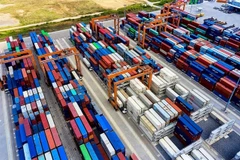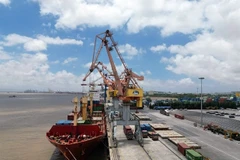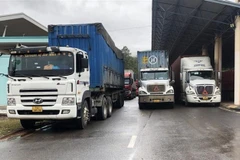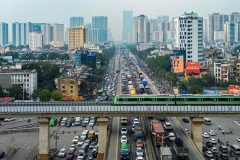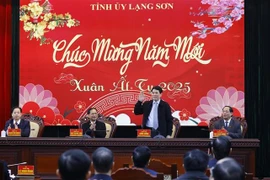* How do you assess the situation of cross-ownership and the current status of the banking system in general?
The cross-ownership among State-run commercial banks, joint stockcommercial banks, foreign commercial banks, capital funds, State-ownedenterprises and private enterprises has reached an alarming level.
In my opinion, the key attributor to the problem was the Government'sloosening monetary policy during the five years from 2006-10 which ledto the explosion of credit activities.
In order tomeet the increasing demand of big credit, credit institutions had tocreate a network among themselves, or own the banks, to ensure a steadycapital supply to their clients. So were the banks.
Due to the pressure for growth, to cut short their administrativeprocedures, including the evaluation and appraisal of paper work, thebanks adopted a tendency to lend money among themselves.
Another attributor was the Government's decision to change 13 ruralbanks into urban banks in three years (2005-07). As a result,cross-ownership between credit institutions became a phenomenamanipulating banking activities nationwide.
Thoughthe process of restructuring the banks has been going on for sometime,the problem of cross-ownership and bad debt are at a stalemate.
* In your opinion, what solutions do we need to push up the restructuring process?
In my opinions, all parties should make their commitments to ensure asteady short term credit supply to enterprises once cross-ownership isterminated. This condition is very important, at it will enableenterprises to seek new credit from elsewhere. For mid- and long-termcredit, it is imperative to review each project to make sure they arefeasible and workable.
In special cases, the StateBank of Vietnam may have to sit with the new or old owners to ensurethey follow the government's guidelines.
Inaddition, it is important to find out why there was a cross-ownershipproblem and its advantages and disadvantages. Once we know the reasonbehind the story, it will help us detect the black spots and the whitespots in the cross-ownership picture during the process of restructuringthe banking system.
For the long term vision, thegovernment should focus more on building transparency in credit andcapital markets with low interest rates.
* Whatare the negative impacts of the slow settlement of the cross-ownershipon the restructuring process of the banking system?
The biggest impact is the danger of loosing capital value when thecross-ownership is eliminated. In addition, the withdrawal of capitalfrom non-core business by enterprises will then put pressure on thevalue of the banks' shares on the trading floor.
Other impacts I should mention are the loss of credit suppliers (thebanks) for mid- and long-term projects by enterprises. In such a case,the enterprise has already invested quite a large sum into a project,but now it does not have the money to complete it.
In other words, the bank has landed in a bad situation as the bad debtsincrease. In the other case, a project has already received mid- orlong-term credit as it is a highly rated project, but now suddenly thecredit agreement is suspended.
In one way or another, the suspension has had a negative impact on the economy in general.-VNA
